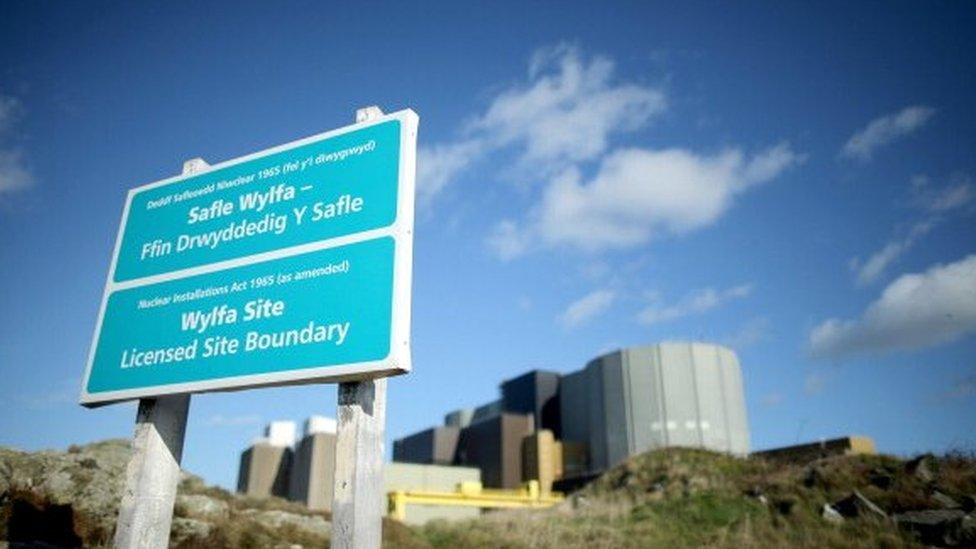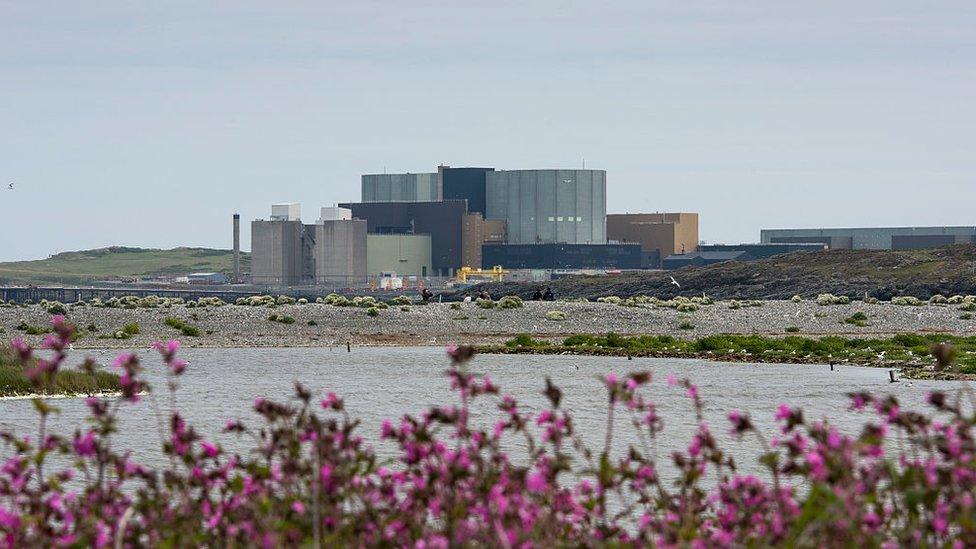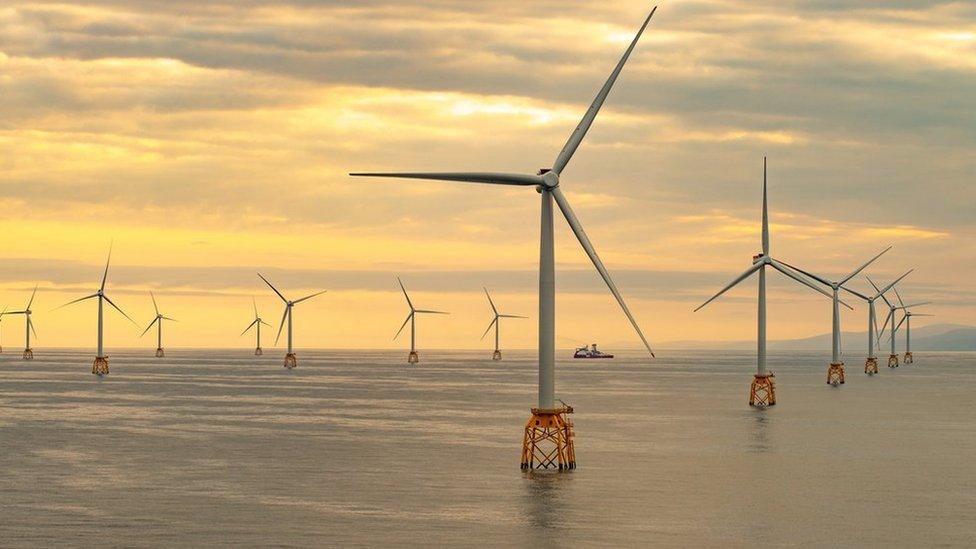UK government could take stake in Sizewell nuclear power station
- Published

The new Wylfa power station would have been built next to the old power plant on Anglesey
The collapse of a project to build a new nuclear power station at Wylfa, Wales may accelerate government approval of a new station at Sizewell, government and industry sources say.
The government is disappointed after Japan's Hitachi pulled out but insists it is committed to new nuclear as way to decarbonise the UK power supply.
It is looking at options to replace China's CGN as an investor in Sizewell.
That could include the government taking a stake in the plant.
Of six sites originally identified over a decade ago for replacements for the UK's ageing nuclear fleet, only one is under construction, three have been abandoned and two are waiting approval.
One major sticking point over Sizewell has been the involvement of Chinese state-owned company China General Nuclear Power Group (CGN) in the UK's new nuclear plans.
CGN already owns a 33% stake in Hinkley Point C in Somerset, currently under construction by French firm EDF, which owns the other two thirds.
The Chinese firm also took a 20% stake in the development phase of Sizewell on the understanding it would participate in the construction phase and then land the ultimate prize of building a reactor of its own design at Bradwell in Essex.
Industry sources and within the government say Chinese involvement in designing and running its own design nuclear reactor on UK soil "looks dead", given revived security concerns and deteriorating diplomatic relations after the government's decision to phase out Chinese firm Huawei's equipment from a new generation of telecommunication networks.
If a mobile network is considered too sensitive, it's hard to argue that a nuclear power station is not.
State aid rules
If CGN are excluded the government may choose to take a direct stake in Sizewell, according to people familiar with the matter.
There was a time when a Conservative government would have been very reluctant to take a direct stake in a commercial development. That time has passed.
One of the reasons the government is fighting tooth and nail to free itself of the EU's conditions on state aid is so that it can turbocharge technologies it thinks will make a lasting difference to the UK economy and its workers.
It's no secret that Boris Johnson's powerful adviser Dominic Cummings is a big fan of the idea of small nuclear reactors and EDF are telling him that big nuclear is an important stepping stone to small.
EDF has also been very vocal about the advantages of reproducing the design of Hinkley at Sizewell. Although a similar design of reactor ran into major cost and time overruns in France and Finland, EDF says they UK is poised to benefit from the lessons learned from those mistakes. It also points out that the UK will benefit from transferring high skilled jobs from one site to another.
There was a time, not so long ago, that government ministers talked enthusiastically about "a new nuclear age". A fleet of brand new reactors producing reliable, low carbon (but expensive) electricity for decades to come.
Hinkley, Moorside, Wylfa, Oldbury, Bradwell and Sizewell were identified as the sites for the most significant national wave of new nuclear power construction anywhere in the world.
Of those six, only one is under construction, three have been abandoned, and two are still waiting for the green light.
The next couple of weeks could tell us which way the wind is really blowing on the government's appetite for both nuclear energy and new levels of direct state investment.
- Published16 September 2020

- Published10 June 2020

